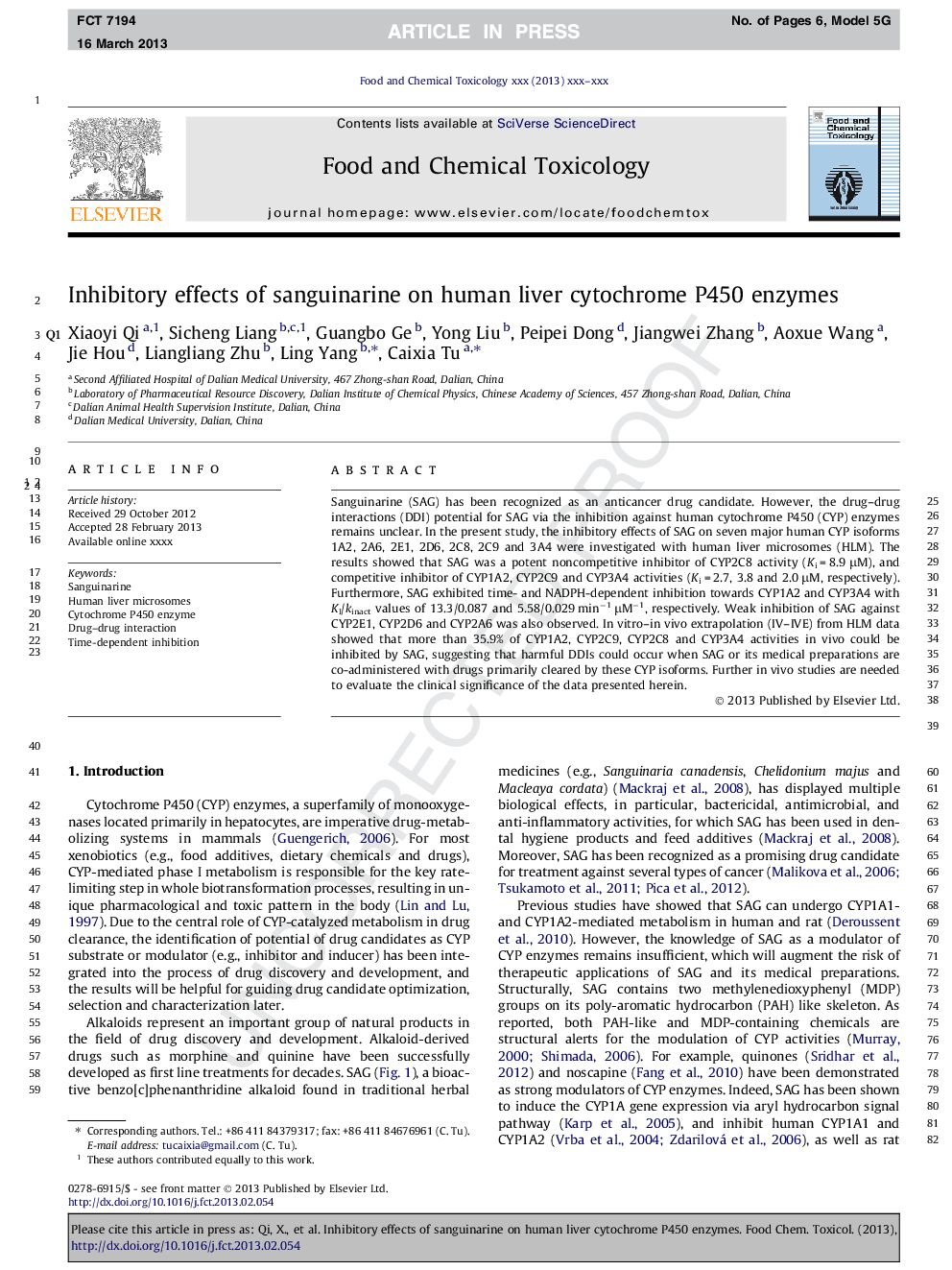| Article ID | Journal | Published Year | Pages | File Type |
|---|---|---|---|---|
| 5851262 | Food and Chemical Toxicology | 2013 | 6 Pages |
Abstract
Sanguinarine (SAG) has been recognized as an anticancer drug candidate. However, the drug-drug interactions (DDI) potential for SAG via the inhibition against human cytochrome P450 (CYP) enzymes remains unclear. In the present study, the inhibitory effects of SAG on seven major human CYP isoforms 1A2, 2A6, 2E1, 2D6, 2C8, 2C9 and 3A4 were investigated with human liver microsomes (HLM). The results showed that SAG was a potent noncompetitive inhibitor of CYP2C8 activity (Ki = 8.9 μM), and competitive inhibitor of CYP1A2, CYP2C9 and CYP3A4 activities (Ki = 2.7, 3.8 and 2.0 μM, respectively). Furthermore, SAG exhibited time- and NADPH-dependent inhibition towards CYP1A2 and CYP3A4 with KI/kinact values of 13.3/0.087 and 5.58/0.029 minâ1 μMâ1, respectively. Weak inhibition of SAG against CYP2E1, CYP2D6 and CYP2A6 was also observed. In vitro-in vivo extrapolation (IV-IVE) from HLM data showed that more than 35.9% of CYP1A2, CYP2C9, CYP2C8 and CYP3A4 activities in vivo could be inhibited by SAG, suggesting that harmful DDIs could occur when SAG or its medical preparations are co-administered with drugs primarily cleared by these CYP isoforms. Further in vivo studies are needed to evaluate the clinical significance of the data presented herein.
Keywords
Related Topics
Life Sciences
Agricultural and Biological Sciences
Food Science
Authors
Xiao-Yi Qi, Si-Cheng Liang, Guang-Bo Ge, Yong Liu, Pei-Pei Dong, Jiang-Wei Zhang, Ao-Xue Wang, Jie Hou, Liang-Liang Zhu, Ling Yang, Cai-Xia Tu,
